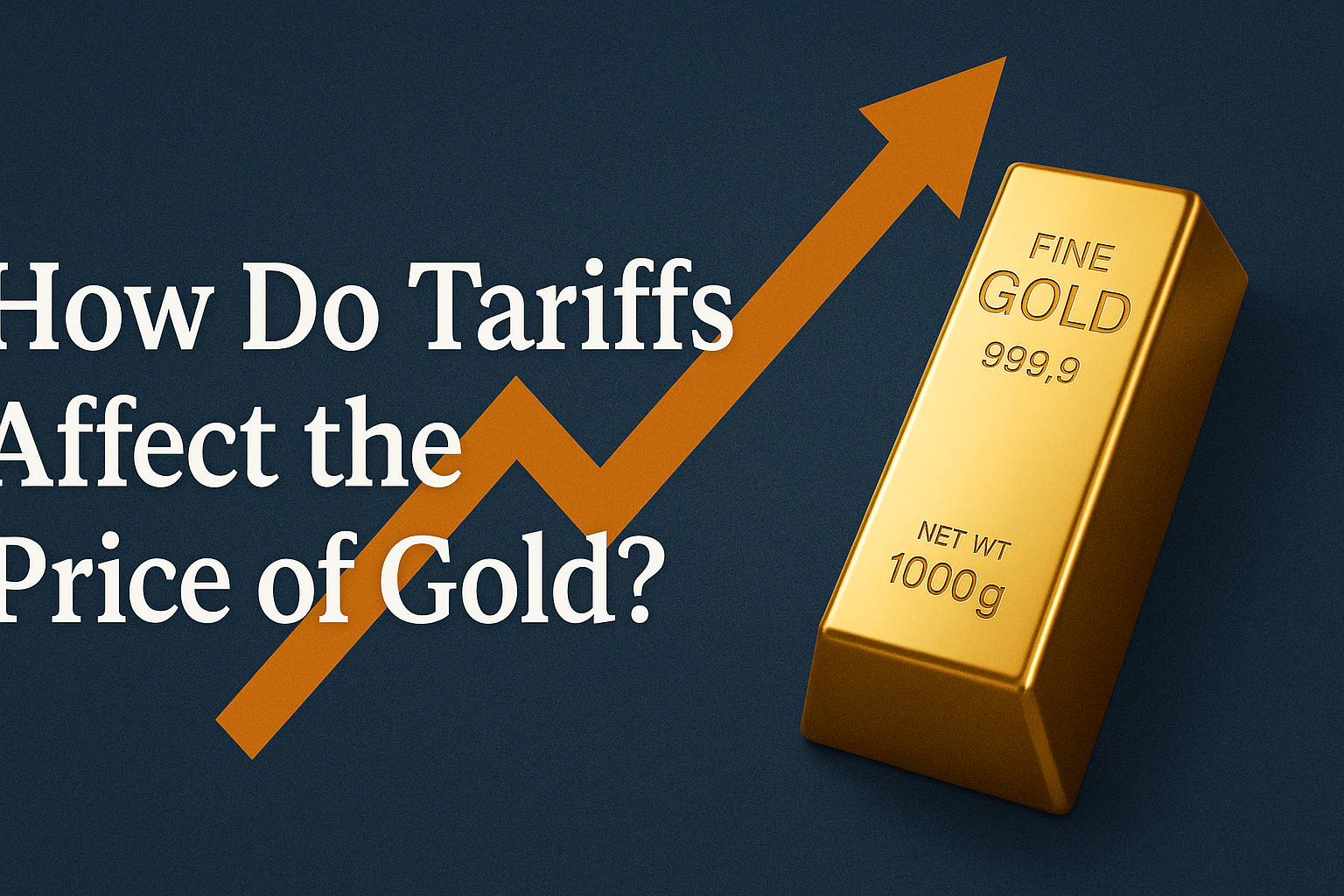If you’ve ever followed the news and heard the word “tariff,” your mind may have skipped to the price of electronics or imported cars. But what about gold? How do tariffs, often seen as mere economic policy tools, ripple out to influence the glittering world of gold prices? Whether you’re a curious investor, a gold enthusiast, or someone just trying to make sense of economic headlines, this article is for you.
Let’s dive into the shimmering connection between tariffs and the price of gold, unraveling the mechanics, the psychology, and the investment opportunities that lie beneath.
What Are Tariffs, Anyway?

In the simplest terms, tariffs are taxes imposed by a government on imported (and sometimes exported) goods. Their primary aim? To make foreign products more expensive, thereby encouraging people to buy domestic alternatives. Tariffs can also serve as leverage in trade negotiations or retaliatory tools during disputes.
So, if the U.S. slaps a tariff on imported Chinese electronics, those goods become more expensive, potentially giving American-made electronics a competitive edge. Simple enough, right?
Well, not quite. Because tariffs don’t just affect the products being taxed—they can shake up entire economies and even influence the price of commodities like gold.
The Safe-Haven Effect: Why Gold Glitters in Uncertain Times
Gold has a long-standing reputation as a “safe haven” asset. When geopolitical tensions rise or economies get wobbly, investors often move their money into gold. Why? Because gold tends to hold its value, even when currencies and stock markets falter.
Tariffs can lead to trade wars, and trade wars breed economic uncertainty. Think back to the U.S.-China trade conflict of the late 2010s. The mere announcement of tariffs caused market tremors, and guess what soared? You got it—gold.
Did you know? During the 2018-2019 U.S.-China trade tensions, gold prices surged over 20%, peaking as investors grew nervous about global economic stability.
The Currency Connection: Tariffs and the Dollar
Gold is priced in U.S. dollars. So, anything that impacts the value of the dollar can indirectly affect the price of gold. When tariffs are introduced, especially by or against the U.S., they can shake confidence in the dollar.
Here’s how it works:
- If tariffs slow down the U.S. economy, the Federal Reserve might lower interest rates to stimulate growth.
- Lower interest rates can weaken the dollar.
- A weaker dollar makes gold cheaper for foreign investors, increasing demand.
- More demand = higher gold prices.
It’s a complex domino effect, but the link is real and observable.
Inflation and Tariffs: A Complicated Duo
Tariffs can contribute to inflation. When imported goods cost more due to tariffs, those extra costs often get passed on to consumers. As prices rise across the board, inflation can creep in.
Gold, historically, performs well in inflationary environments. Investors turn to it to preserve their purchasing power. So, when tariffs start nudging inflation upward, gold often gets a boost.
That said, it’s not a straight line. Other economic factors like wage growth, consumer spending, and interest rates also play significant roles.
Still, if you’re seeing tariffs make headlines and consumer prices creeping up, it’s a good time to look at gold.
Supply Chain Disruptions: Less Direct but Still Impactful
Tariffs can also disrupt global supply chains, especially in industries reliant on imported components or materials. This doesn’t always directly affect gold, but it can lead to broader market volatility—which, again, sends investors toward safer assets.
Imagine a scenario where a tariff on imported steel causes car manufacturers to cut production. That ripple effect might lead to job cuts, reduced consumer confidence, and lower stock prices. The result? Increased demand for gold.
Case Study: U.S.-China Trade War
Let’s rewind to 2018. The Trump administration imposed tariffs on billions of dollars’ worth of Chinese goods. China responded in kind. As tensions escalated, the global markets grew jittery.
During that period:
- The S&P 500 experienced sharp volatility.
- The dollar seesawed in value.
- Gold prices rose from around $1,200 to over $1,500 per ounce in less than a year.
Investors who recognized the early warning signs and shifted into gold saw solid returns. It was a textbook case of tariffs influencing gold prices through a web of economic triggers.
Industrial Demand and Mining Costs
Not all of gold’s value comes from investment demand. A small but significant portion is used in electronics, dentistry, and jewelry. Tariffs on components or raw materials used in these industries can reduce production and demand for gold in these sectors.
At the same time, if tariffs affect the cost of mining equipment or labor (e.g., due to cross-border taxes), the cost of gold production may rise, tightening supply and pushing prices up.
These aren’t always headline-making factors, but they contribute to the bigger picture.
How You Can Respond as an Investor
Okay, so tariffs affect gold prices in multiple ways—through uncertainty, inflation, currency shifts, and more. The question is: What can you do about it?
- Stay Informed: Watch the news for tariff announcements, trade negotiations, and geopolitical shifts. Understanding the broader narrative helps you anticipate gold price moves.
- Diversify Your Portfolio: Don’t wait for economic storms to start building your ark. Allocating a portion of your portfolio to gold or gold-related assets (like ETFs or mining stocks) can offer protection.
- Choose Your Entry Points: Not every tariff causes an immediate gold spike. But when tensions persist or escalate, that’s your cue to consider entry.
- Talk to an Advisor: A financial advisor can help tailor a strategy that fits your risk tolerance and goals.
A Look to the Future: What Might Be Next?
With global trade still in flux, especially in regions like the EU, China, and the U.S., tariffs are likely to remain a policy tool. And that means gold will continue to react.
Upcoming elections, global conflicts, and economic policies could all contribute to renewed trade tensions. If you’re keeping an eye on inflation, currency strength, or simply seeking a hedge against volatility, gold remains a compelling option.
Final Thoughts
Tariffs might seem like political chess pieces, but their economic consequences are very real—and they often find their way into the price of gold. Whether you’re new to investing or a seasoned pro, understanding how these dynamics play out gives you a leg up in a world that’s anything but predictable.
Gold isn’t just a shiny metal; it’s a barometer of global anxiety, a reflection of economic forces, and a strategic investment in uncertain times.

